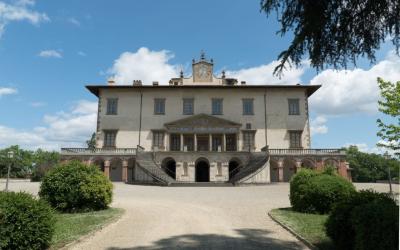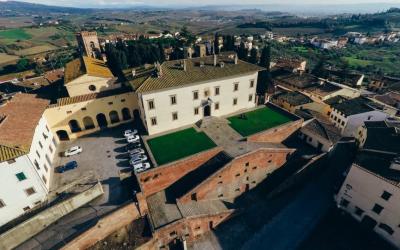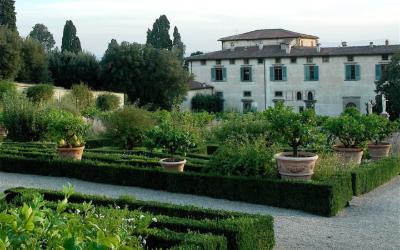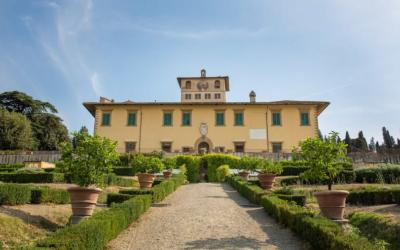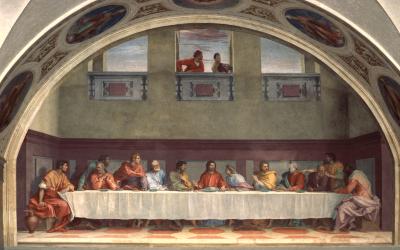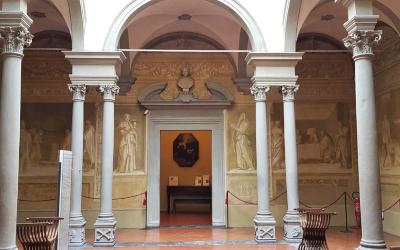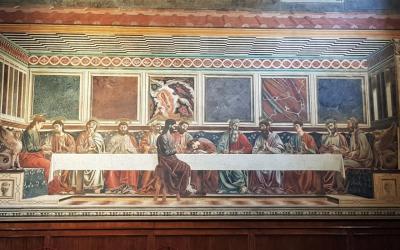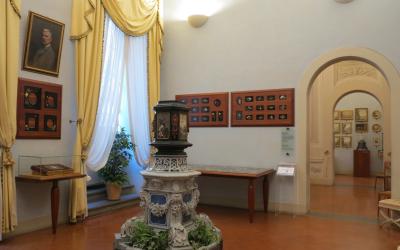The Villa, declared a UNESCO World Heritage Site in 2013, was designed by Giuliano da Sangallo for Lorenzo the Magnificent as an example of Renaissance architecture that blends the lessons of the classics (particularly Vitruvius) with elements characteristic of Tuscan rural architecture.
The influence of Leon Battista Alberti is evident, both in the choice of the site on which the Villa stands and in the pursuit of symmetry and harmonious proportions.
-
Opening days
Tuesday to Sunday
-
Opening times
8:15 a.m. – 5:00 p.m.
Last admission: 4:30 p.m. -
Closing
-
Mondays
-
January 1st
-
December 25th
The Park is currently closed to the public until further notice.
-
- Web The Medici Villa of Poggio a Caiano
-
Feature List
- Info line
-
Accessibility
Perched atop the hillock (poggio) and elevated by the platform of its portico, which accentuates its prominence, the villa extends into the landscape as a symbol of humanity's ordering influence over nature.
A Brief History
Construction began in the mid-1480s and continued uninterrupted until the death of Lorenzo the Magnificent in 1492. Work resumed in 1512 under the direction of his son Giovanni, who had since become Pope Leo X, and was completed towards the end of the 1510s.
The decorations on the facade and portico are classical: the pediment bears the Medici coat of arms above the frieze, in which the inclusion of polychrome glazed terracotta provides an element of continuity with 15th-century Tuscan tradition.
The building has witnessed more than just the Medici family. After an interlude under the House of Lorraine, it became the residence of Elisa Baciocchi, Napoleon Bonaparte's sister, in the 19th century. During the period when Florence was the capital of the Kingdom of Italy (1865-1871), it was renovated by King Victor Emmanuel II of Savoy, who designated it as one of his country residences.
The interior bears particularly interesting features left by the important figures who contributed to the villa's construction and decoration. Especially striking, on the piano nobile (main floor), is the majestic Hall of Leo X, which preserves almost entirely one of the most significant Tuscan fresco cycles of the 16th century, created by Pontormo, Andrea del Sarto, Franciabigio, and Alessandro Allori.
On the second floor, the Museum of Still Life displays around 200 paintings, most of which belong to the Medici collections.
Finally, extending outside the Villa are the garden and the park, dominated not only by the mass of the villa itself but also by the large 19th-century limonaia (lemon house), at the foot of which stand the monumental 16th-century stables.
Services
-
Visits
The Apartments and the Museum can be visited separately from Tuesday to Sunday.
Guided tours last approximately one hour, with entrance every hour from 8:30 am to 3:30 pm. The 1:30 pm tour is not available.
For consecutive visits, reservations must be made for the Apartments first, followed by the Museum.
Reservations are required and free of charge at +39 055 877012
available in Italian
Additional Info
The Apartments and the Museum can be visited separately from Tuesday to Sunday.
Guided tours last approximately one hour, with entrance every hour from 8:30 am to 3:30 pm. The 1:30 pm tour is not available.
For consecutive visits, reservations must be made for the Apartments first, followed by the Museum.
Where
Piazza de' Medici, 14 - Poggio a Caiano (PO)
Visiting Rules
In the event of a yellow, orange, or red weather alert, the parks, gardens, and outdoor areas of the Tuscany Regional Museums Directorate may be closed to the public to ensure safety.

